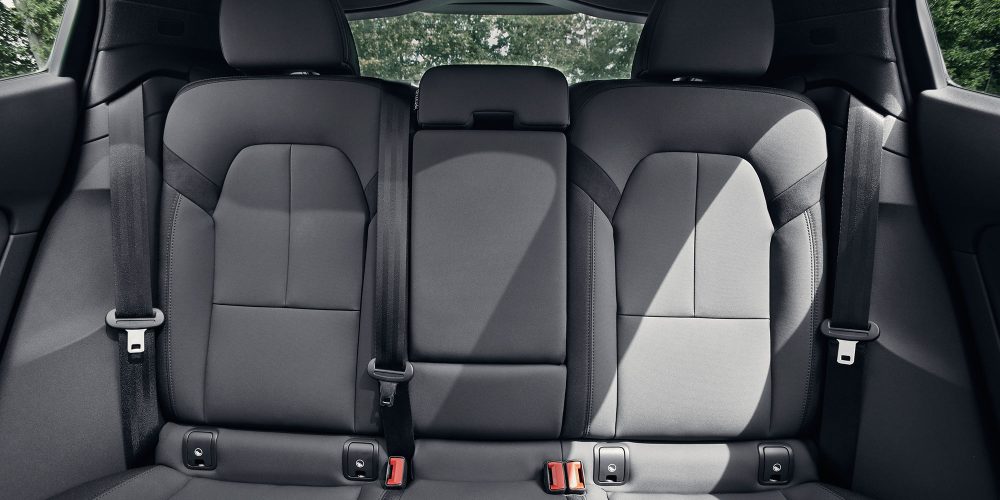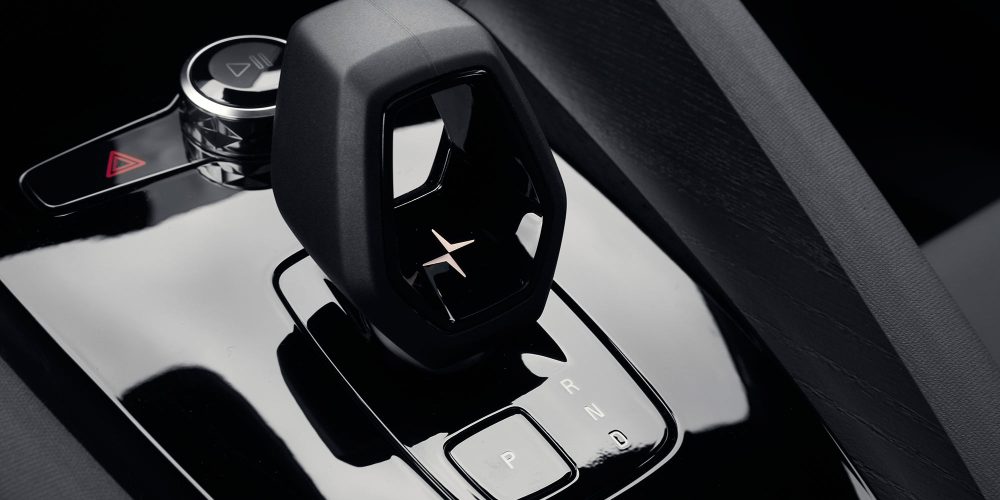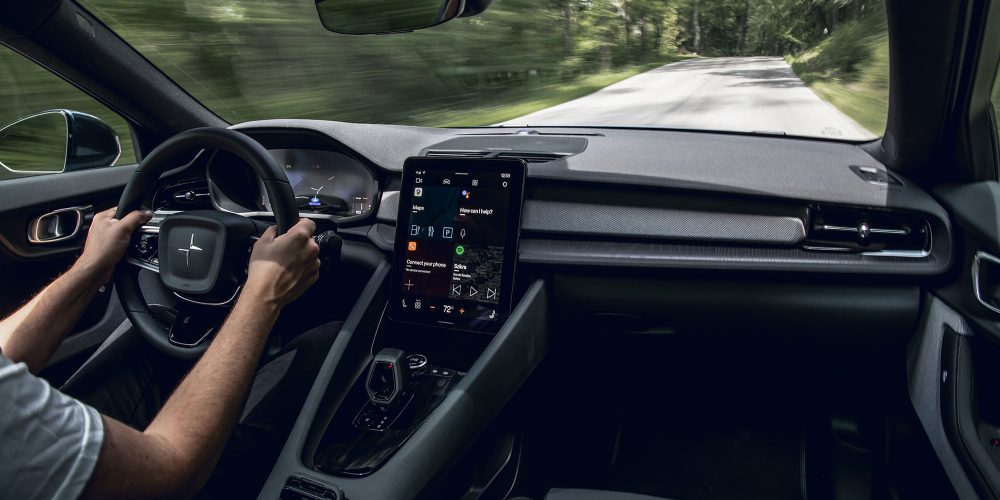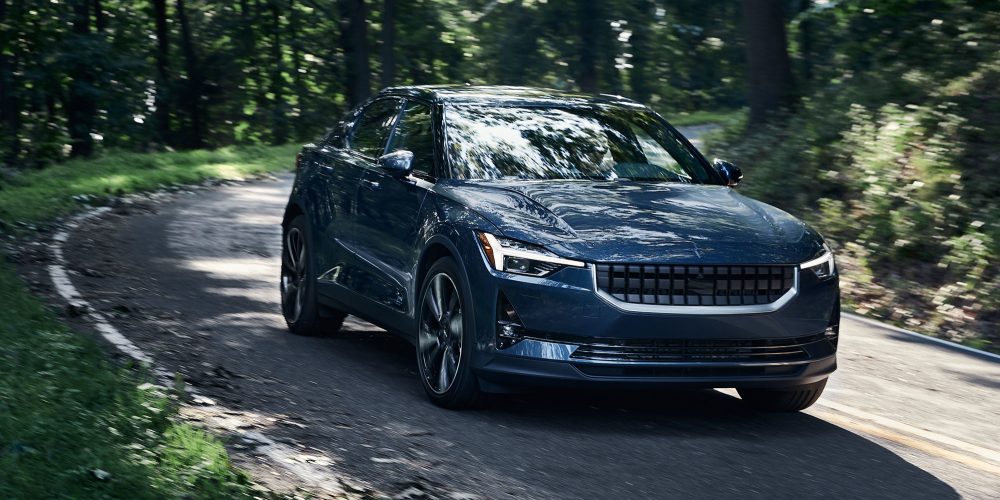
This week, I took the new all-electric Polestar 2 for a 145-mile drive from San Francisco, down coastal Highway 1, and through the twisty mountainous roads west of Silicon Valley. The taut, sporty, and long-range Polestar 2 sedan was an absolute delight to drive. The most enjoyable aspect of the Polestar EV is not what it offers, which is plenty, but what it lacks: virtue signaling.
The Sino-Swedish brand’s first pure EV provides the best of what a well-designed and well-built electric vehicle can offer. And yet I was free from any need to project that I’m saving the world, moving a needle, or that I’m part of a club of insiders that requires EVs to pass a purity or allegiance test. Bystanders watched me whizz by but had no clue what I was driving, other than some kind of new, sleek European sedan.
They didn’t have much of a chance to size me up. The Polestar 2 launch edition dishes out 487 pound-feet of torque. But it’s tuned for sporty pleasure — not to snap my neck or show-off a cleverly marketed “mode” of electric acceleration. The fully loaded, dual-motor P2 has way more thrust and top-end speed than I could possibly use.
Christian Samson, Polestar’s head of product, later told me that the company’s engineers drove numerous competing brands before deciding to “avoid erratic behavior,” and instead “reward the driver in a full range of circumstances.” As with nearly every aspect of the vehicle, quiet confidence replaces braggadocio. The Polestar credo: under-promise and over-deliver.
Samson wrote:
We’re proud to deliver an incredibly smooth driving experience combined with massive power and control when desired. We stepped away from a pedal map that promises a lot in the beginning, but then cannot follow up to deliver when you demand more.

The Polestar 2 is a driver’s car — an executive sports car. The go-pedal is firm. The brake pedal barely travels. The “standard” setting for one-pedal driving is ultra-aggressive.
While traveling on the highway, I stepped into the accelerator and was at triple digits in one beat. But it’s not about top speed. Polestar CEO Thomas Ingenlath, on a web call the day before the drive, nailed it with this comment:
An electric car is not to be defined anymore by speed exclusively. It’s so much more about how well the car behaves on nice curvy country roads and how you enjoy going left and right in the corner.
The dual-motor setup emphasizes rear-wheel power for more driving control. The twisties on Highway 35 heading down to Los Gatos became a high-speed slalom course, enhanced by the smoothness of the powertrain and the quietness of the cabin. Deep space silent.
Guiding my path was a dashboard interface reflecting an intelligence, sense of space, and careful restraint, probably only available from a car company run by a Scandinavian designer. (Indeed, that’s Ingenlath’s background.) Polestar’s custom san-serif Helvetica-like typeface and signature orange sets the tone.

More quality, less attitude
There’s a pervasive feeling that every feature and interaction was crafted based on my practical needs — not the whims of a Silicon Valley engineer-auteur. Build quality is first-rate. Fit and finish are spot-on. And the front row’s high window placement and large arching center console divide the space down the middle, nestling the driver and front passenger into two separate quarters.

What impresses the most is the little touches reflecting an understanding of EVs. A little cross-hashed orange section of the charge-power graph illustrates how much of the braking is friction versus motor recuperation. That’s presented next to estimated miles and percentage battery state-of-charge. All the info, exactly what an EV driver needs and nothing more, takes up less space than the face of a Skagen watch.
The use of Google’s Android Automotive operating system carries the same care for the driver to the dashboard screen’s interactions. (Its benefits deserve a separate post.)
The Polestar 2 had nothing to prove except that the Geely/Volvo electric brand could produce a first-rate automobile. No razzle-dazzle or stock-price-pumping claims. No need to redefine what a digital, minimalist automotive cockpit should be. Polestar is not trying to offer the most range, biggest battery, lowest coefficient of drag, or the fastest 0-to-60 times. DC fast-charging at 150 kW is fast enough. Home charging at 11 kW gets the job done. They leave all the superlatives to other automakers with messianic ambitions and their faithful followers.
Ingenlath, Polestar’s chief, said:
It’s not about beating somebody. It’s about offering something else than what the others offer already. It doesn’t help us when we all aim for the same thing. The offer for the customer becomes interesting if you have alternatives, not to copy somebody and do exactly the same but to really come up with a different experience. I think the Polestar 2 has an intriguing and great character.
The Polestar 2 will get an official EPA range estimate any day. But once again, Polestar remains humble. I drove like a maniac, finishing the 145-mile day with 13% of charge left over. That means a worst-case scenario from the 78 kilowatt-hour battery is about 175 miles. Polestar’s test of steady-state 70-mph driving pegs range at 205 miles. (WLTP estimates 291 miles.)
In that 70-mph test, Polestar ran competing cars down until their batteries were dead-dead — and the vehicle could no longer move. Other models showed that absolute zero state-of-charge as zero on the dash. The Polestar 2, even when indicating 0%, had 10 miles of reserve. Its personality is downright obsequious, flashing me a pop-up apologizing that only 55 miles of estimated range was left for a 35-mile leg of the trip (with 10 more miles in reserve).
Maybe that’s too cautious. But what do you expect from a Volvo sister brand? Instead of promising that the P2 will soon form an army of sentient robotaxis, Polestar used the model to introduce the world’s first inner-side airbags in the front and a “severe partial offset crash” block to further protect put the battery structure from collision damage.
JP Canton, heads of communications for Polestar Americas, told me that many of the folks pre-ordering a Polestar 2 did so solely based on the new brand’s association with Volvo. Those buyers have confidence in Volvo’s safety, build quality, and network of service providers that Polestar owners will utilize. Those consumers made it clear: They are not considering any other EV brand.
This news — that there’s a segment of buyers who want an alternative to what’s out there now — is a hopeful sign for the EV movement.
Compared to the dominant electric model, EV buyers can choose a gorgeous, long-range, Euro-chic electric sedan — for a similar price, more or less, after incentives. The Polestar 2 launch edition is $59,900 but still qualifies for the $7,500 tax credit and possibly thousands more in state credits. The more affordable single motor with a smaller pack coming in 2021 will also stack up competitively.
Did I love everything about the Polestar 2? Of course not. The canvas-like seats (vegan or not) could have been more comfortable. The back row is more suited to four people, not five. The numerous little cubbies and jutting interior elements (and reflective black surface) seem too inviting of dust and smudges. The pano roof is dramatic but creates glare and doesn’t open. Rear visibility is poor.
But these gripes are beside the point. They are aesthetic peeves. Here’s the real point: The first boat of Polestar 2s is expected to arrive at the Long Beach port today. That signals the first teeny-tiny breath of fresh air in an EV market otherwise deprived of oxygen by one player sucking the air out of the room. The faint breeze starting to stir will soon be fanned by other automakers.
At last, there’s a legit choice for those of us who want a spectacular driving and ownership experience behind the wheel of a sharply-styled, feature-complete electric sedan. And humble buyers that simply want a great car (that happens to be electric) can get one simply for the joy of electric motoring, without trying to prove that we’re better than everybody else.

Electrek’s Take
Not every EV brand will be high-volume. A thriving electric-car marketplace needs fresh niche offerings as well as mega-production. In keeping with Polestar’s underpromise-overdeliver strategy, it will deliver only about 3,000 Polestar 2s in the US in 2020. That number will increase to 10,000 units in 2021— a year in which it starts rolling out the Polestar 3, its electric crossover.
CEO Ingenlath said that Polestar’s ambitions “at some point” is to reach 50,000 worldwide. Its showroom will never go beyond about four models, perhaps five.
Let’s take a big-tent approach and encourage the widest selection of electric brands, segments, and sizes. Every ICE car that gets kicked to the curb is an improvement. Every EV that gets added to the road counts, especially one as powerful and pleasing as the Polestar 2.
FTC: We use income earning auto affiliate links. More.








Comments